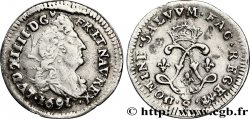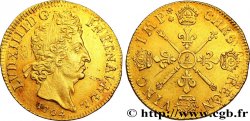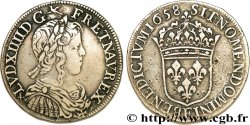- Accueil
- >
- >
E-auction 440-352187 - fme_696661 - LOUIS XIV "THE SUN KING" Pyramide élevée à Rome, refrappe moderne
Чтобы принять участие в торгах, вы должны войти в систему и стать подтвержденным участником аукциона. Войдите, чтобы сделать ставку. Ваш аккаунт будет подтвержден в течение 48 часов. Не ждите до закрытия торгов, чтобы зарегистрироваться.Сделав ставку на данный товар, вы вступаете в юридическое соглашение на покупку выбранного товара и нажатием кнопки «Сделать ставку» подтверждаете принятие вами условий интернет-аукционов cgb.fr.
Ставка может бить сделана только в полном эквиваленте евро. Торги закроются согласно времени, указанному в описании товара, все ставки, сделанные после закрытия торгов, учитываться не будут. Не следует откладывать предложение вашей ставки до последнего момента, так как система может не успеть обработать вашу заявку, и ваша ставка не будет принята. Более детальную информацию вы найдёте здесь: FAQ по интернет-аукционам.
БЕСПЛАТНО.
БЕСПЛАТНО.
| Оценить : | 60 € |
| Цена : | 35 € |
| Максимальная предлагаемая цена : | 35 € |
| Конец торгов : | 20 September 2021 18:53:00 |
| Участников : | 4 Участников |
Тип Pyramide élevée à Rome, refrappe moderne
Дата: 1664
Металл: bronze
Диаметр: 40,5 mm
Ориентация осей монеты: 12 h.
Гравер MAUGER Jean (1648-1712)
Вес: 34,61 g.
Век: lisse + corne BR
Пуансон: corne BR
Комментарии о состоянии
Patine hétérogène, des frottements dans les champs. Présence de coups et rayures
Ссылки в каталоге: :
Лицевая сторона
Аверс: легенда: LUDOVICUS XIIII . REX CHRISTIANISSIMUS..
Аверс: описание: Buste de Louis XIV à droite, signé I. MAVGER. F.
Аверс: перевод: (Louis XIV, roi très chrétien).
Обратная сторона
Реверс: легенда: OB NEF. SCELUS A CORSIS EDIT. IN ORAT. REG. FR.
Реверс: Описание: La ville de Rome, sous la figure d’une femme assise, tenant un javelot et un bouclier sur lequel on lit : ROMA. A droite la nouvelle pyramide ; à l’exergue : POSITA PYRAMIDE / M DC LXIV.
Комментарий
En août 1662, les gardes de l’ambassadeur du roi de France à Rome eurent une querelle avec les gardes corses du pape. Du côté français, il y eut des blessés et même un mort. Comme la cour de Rome hésitait à présenter ses excuses, l’ambassadeur quitta la ville. Louis XIV, de son côté, ordonna le nonce apostolique de quitter la cour et occupa Avignon et le Comtat Venaissin. une guerre semblait éclater d’un moment à l’autre.
Finalement, une paix fut conclue entre le pape Alexandre VII et le roi de France. Louis XIV restituait le Comtat et le pape en échange offrait comme réparation le renvoi de la garde corse, une déclaration d’excuses du nonce et l’érection d’une pyramide à Rome, en mémoire à ces excuses.
La pyramide fut érigée au commencement de l’année 1664. Le 29 juillet de la même année, le neveu du pape, le cardinal Chigi, fut reçu en audience dans la chambre du roi et présenta les excuses de Rome (médaille 79). Le pape Clément IX, le successeur d’Alexandre VII, désirait la destruction de la pyramide, ce témoignage de l’humiliation papale. Louis XIV finit par donner son consentement et la pyramide fut détruite en 1668.
Finalement, une paix fut conclue entre le pape Alexandre VII et le roi de France. Louis XIV restituait le Comtat et le pape en échange offrait comme réparation le renvoi de la garde corse, une déclaration d’excuses du nonce et l’érection d’une pyramide à Rome, en mémoire à ces excuses.
La pyramide fut érigée au commencement de l’année 1664. Le 29 juillet de la même année, le neveu du pape, le cardinal Chigi, fut reçu en audience dans la chambre du roi et présenta les excuses de Rome (médaille 79). Le pape Clément IX, le successeur d’Alexandre VII, désirait la destruction de la pyramide, ce témoignage de l’humiliation papale. Louis XIV finit par donner son consentement et la pyramide fut détruite en 1668.








 Cообщить об ошибке
Cообщить об ошибке Распечатать страницу
Распечатать страницу Отправить мой выбор
Отправить мой выбор Задать вопрос
Задать вопрос Consign / sell
Consign / sell
 Информация
Информация









